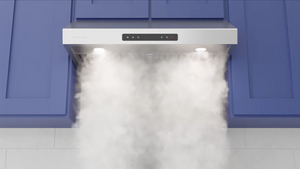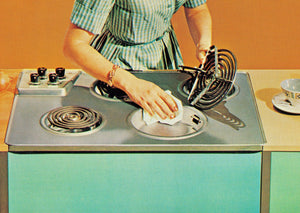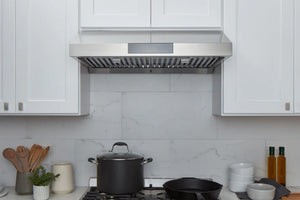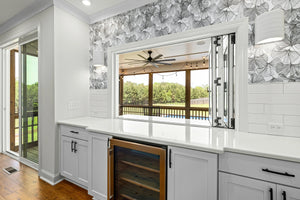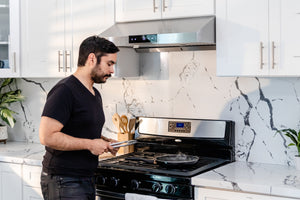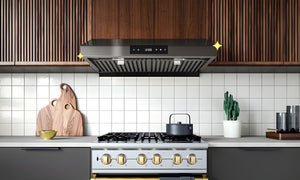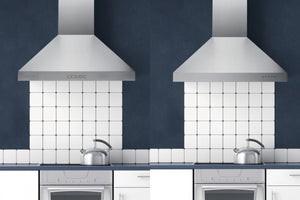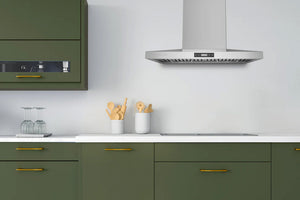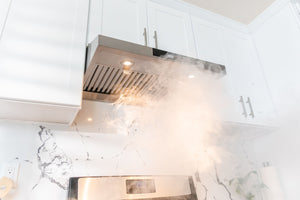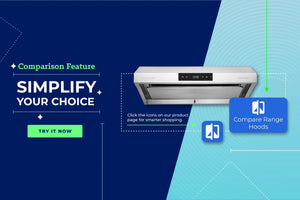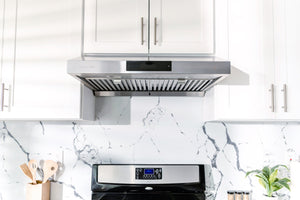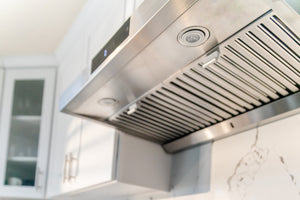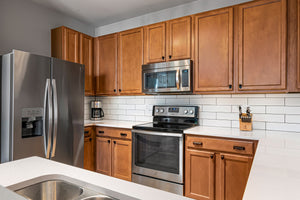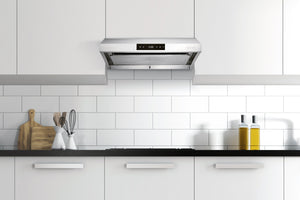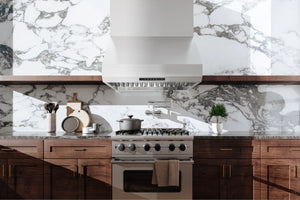TIPS & GUIDES
Over the Range Microwaves Exhaust Fans vs. Range Hoods
By Hauslane ∙ 6 mins readRange hoods whisk away fumes and keep your kitchen clean from grease. Microwaves help to thaw and warm up food. Over the range (OTR) microwaves with exhaust fans try to bring these two functions together into one appliance.
What are the pros and cons of these appliances? Can OTR perform as well as a traditional range hood? Which should you choose: a range hood or a microwave vent? Here’s everything you need to know about OTR microwaves before you buy.

Range Hood and Microwave Hood Comparison
Over the Range Microwaves: Pros and Cons
The main reason most people select an over-the-range (OTR) microwave is space. First, these microwaves free up counter space. With an OTR microwave, you can combine space, ventilation, and task lighting into one space. If you have a smaller kitchen, you might like the idea of seemingly getting a microwave and range hood in one.
How about the cons? An OTR microwave is not a range hood. It’s a microwave with ventilation and lighting. Those are two very different things. They typically don’t ventilate as well as a range hood. That means you’ll have to deal with the effects of poor air quality. This is one of the main reasons people choose to replace their microwave with a range hood. Poor air quality can irritate your eyes, nose, and throat and trigger asthma as well as other respiratory issues. It will also set off your smoke alarm, only adding insult to injury!
OTR microwaves with exhaust fans also don’t provide the same level of surface coverage for your range. This might be okay if you never use your range or very rarely. If you have a gas range and/or cook regularly, they’re probably not a good choice.
You also need to know your cabinetry. Many OTR microwaves are taller than your average range hood. So, they may take up more space than you realize. You have to make sure your cabinets provide enough clearance between the bottom of the microwave and your range. If you don’t have enough range hood clearance above a gas stove, you run the risk of fire.
Range Hoods: Pros and Cons
A range hood is a purpose-built appliance. By that we mean, it’s crafted to suck up fumes, neutralize odors and grab grease. It’s also made to provide full coverage of your stovetop. That means they’ll be able to whisk away more odors, smoke, and fumes.
You can also find a range hood to fit your needs. Instead of having to settle for whatever your OTR microwave can provide in terms of performance, you can select options that work for you. You might consider the performance level, style, and size to narrow down your options.
If you cook often and/or have a gas cooktop, you need your own range hood. The only true con to a range hood is that it isn't a microwave. You won’t get two functions from one appliance. Then again, if your microwave needs repairs, you’ll still have access to your range hood!
As you can see, there are plenty of benefits to replacing your microwave with a range hood. Range hoods are more effective at clearing the air and come in a wide range of styles, sizes, and performance levels to fit every homeowner’s needs.
Vented vs. Recirculated OTR Microwaves and Ducted vs. Ductless Range Hoods
With OTR microwaves, you’ll find two kinds: vented and recirculated. When it comes down to the details, the winner of the microwave recirculating vs. convertible vent showdown goes to OTR microwaves with convertible vents. They do a better job of extracting toxins and smoke (although not at the same level as a range hood). A vented option will remove these fumes and vent them to the exterior of your home. A recirculating OTR microwave uses charcoal filters to neutralize air before it is pumped back into your kitchen.
Ducted range hoods connect to ductwork to pump air outside your home. Compared to ductless range hoods, they are more efficient and effective at neutralizing air. Ductless range hoods use charcoal filters to clean the air and recirculate it. If you can’t install ductwork for whatever reason, you can make your kitchen smell and look fresher with a ductless range hood.
For the majority of home chefs out there (of any skill level), a traditional range hood is the best option. Though OTR microwaves have their perks, replacing your microwave with a range hood comes with even greater advantages. For more insights into how to improve your cooking experience with the right type of range hood, check out our range hood buyer’s guide.








